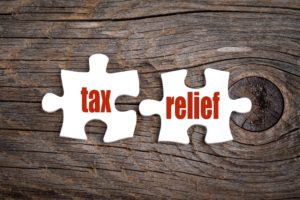 CAA: Payroll Tax Relief Provisions
CAA: Payroll Tax Relief Provisions
by David Kaplan, CPA
Included in the Consolidated Appropriations Act, 2021 (CAA) signed by President Trump on December 27, 2020 were several updates to previously enacted payroll tax related relief items.
The changes made by the CAA to these existing provisions have expanded the availability of certain payroll tax credits which may result in employers being able to claim additional payroll tax credits that were not available to them under the previous legislation.
TIME SENSITIVE CHANGE
Within the CAA, the Taxpayer Certainty and Disaster Tax Relief Act of 2020 (TCDTR) has a retroactive change with regard to the Employee Retention Credit. Employers who received Paycheck Protection Program (PPP) Loans are now eligible to receive the Employee Retention Credit under the guidelines originally passed in the Coronavirus Aid, Relief, and Economic Security Act passed March 27, 2020 (CARES Act). If an employer paid qualifying wages during the first three quarters of 2020, the CAA provides guidance that employers can claim the credits on their 4th Quarter 2020 payroll returns, instead of filing amended returns if they have already filed the previous quarter payroll returns. The 4th Quarter 2020 Form 941/Form 944 returns are due by February 1, 2021.
Note that wages used to claim the Employee Retention Credit will need to be excluded from the “payroll costs” when determining PPP loan forgiveness amounts.
Employee Retention Credit Related To COVID-19
As part of the CARES Act, the Employee Retention Credit is available to any size employer (i.e., not limited based on employer’s size/# of employees, etc.), including tax-exempt organizations.
However, this credit is NOT available to:
- Governmental employers (for 2021 colleges, universities and entities whose principal purpose is to provide medical or hospital care are eligible for the credit) or
- Self-employed individuals.
Originally, this credit was only available for wages paid after March 12, 2020 and before January 1, 2021 and was capped at a credit of $5,000 per employee. The TCDTR provides further expansion and an increase on the credit during the expanded period as explained in the following paragraphs.
Beginning on January 1, 2021 and through June 30, 2021, eligible employers will receive a fully refundable credit against their applicable employment taxes (employer’s share of Social Security taxes – 6.2%) equal to 70% (increased from 50%) of qualified wages paid to each employee during a calendar quarter. The maximum amount of qualified wages that may be taken into account for each employee for each 2021 calendar quarter is $10,000, which was formerly capped at $10,000 per employee for the 2020 calendar year. This results in a credit of up to $7,000 per employee in each of the first and second quarters of 2021.
The allowable credit is refundable to the extent it exceeds the employer’s payroll tax liability. For employers with fewer than 500 employees, they can apply for an advance on the credit up to 70% of the average quarterly wages paid by the employer during the 2019 calendar year.
Eligible employers, as redefined in the CAA for determining credits for wages paid in 2021, are defined as an employer that:
- Was carrying on a trade or business during calendar year 2020 AND
- During any calendar quarter of 2021 that the operation of such trade or business is fully or partially suspended due to government orders that limit commerce, travel or group meetings due to COVID-19 OR for a period beginning in any calendar quarter in which the gross receipts of such employer are less than 80% of the gross receipts for the same calendar quarter of 2019.
- For employers who were not in business during 2019, an election can be made to look at the previous calendar quarter instead of the corresponding 2019 calendar quarter when looking at the less than 80% of gross receipts.
Qualified Wages, as redefined in the CAA for determining credits for wages paid in 2021, are defined as follows:
- For employers with greater than **500 full-time employees during 2019 – wages paid by the employer to an employee that is not providing services due to either of the circumstances listed for an eligible employer above. Therefore, only those wages that are paid to employees that are not working are eligible for the credit.
- For employers with less than **500 full time employees during 2019 and such employer has had to reduce or cease operations due to a government order – wages paid by the employer to an employee during any period of time during such reduction/closure.
- For employers with less than **500 full time employees during 2019 and such employer meets the requirements related to the 20% reduction in gross receipts (discussed fully above) – wages paid by the employer to an employee during the calendar quarter within the eligible period.
** Average number of full-time employees during 2019 (taking into account full-time equivalent rules under IRC 4980H) – must include “related employers” when making this determination.
Qualified wages include costs incurred by the employer for qualified health plan expenses allocable to such eligible wages.
Qualified wages exclude the following amounts:
- Wages required to be paid under the “Sick Leave” and “Family and Medical Leave” provisions of the FFCRA, as amended by the CAA
- Wages for which a Work Opportunity Tax Credit (WOTC) are claimed.
- Wages for which a Family and Medical Leave Credit are claimed, not related to COVID provisions.
- Wages paid to anyone owning more than 50% of the stock of a corporation or more than 50% of the capital or profits of a partnership (after applying IRC 267 attribution rules).
Payroll Tax Credit for Paid Sick and Family Leave
As part of the Families First Coronavirus Response Act (FFCRA) passed on March 18, 2020, businesses with fewer than 500 employees are eligible to receive a refundable payroll tax credit for providing paid sick and family leave wages to their employees for leave related to COVID-19. Originally these credits were set to expire as of December 31, 2020 but have now been extended through March 31, 2021 as a result of the COVID-19 Tax Relief Act of 2020 (CTRA) which is within the CAA.
Under the FFCRA, employers who met certain criteria were required to provide these COVID-19 related benefits to their employees in 2020; however, in addition to the CAA extending the time period for providing these benefits and claiming these credits, employers that were previously required to provide their employees with these benefits may now choose for 2021 whether or not to provide these benefits to their employees during this extended time period.
The following is an overview of these benefits and related payroll tax credits:
The first 80 hours of paid sick wages can qualify for the Paid Sick Leave Refundable Credit if the reason an employee is unable to work falls under one of the following 2 Groups:
Group 1:
- The employee is under a Federal, State, or local quarantine or isolation order related to COVID-19;
- The employee has been advised by a health care provider to self-quarantine due to concerns related to COVID-19;
- The employee is experiencing symptoms of COVID-19 and seeking a medical diagnosis;
Group 2
- The employee is caring for an individual who is subject to a Federal, State, or local quarantine or isolation order related to COVID-19, or has been advised by a health care provider to self-quarantine due to concerns related to COVID-19;
- The employee is caring for the child of such employee if the school or place of care of the child has been closed, or the childcare provider of such child is unavailable, due to COVID–19 precautions;
- The employee is experiencing any other substantially similar condition specified by the U.S. Department of Health and Human Services.
If the employee is getting paid sick leave under Group 1, the sick leave pay must not be less than their regular pay rate (or minimum wage, if greater), up to $511/day or a total of $5,110 per employee. The credit for Group 1 would be equal to the wages required to be paid.
If the employee is getting paid sick leave under Group 2, their sick leave pay must not be less than two-thirds of the employee’s regular rate of pay (or minimum wage, if greater), up to $200 per day or a total of $2,000 per employee. The credit for Group 2 would be equal to the wages required to be paid.
After an employee has used up the 80 hours of sick leave, employers can then receive a credit for wages paid under the Family and Medical Leave Act (FMLA) for up to 10 weeks following the sick leave period if the employee is unable to work because of a need to care for a child whose school or place of care is closed, or whose child care provider is unavailable due to the coronavirus. For these qualified wages under FMLA, the refundable credit is equal to two-thirds of the employee’s regular wages paid up to $200 per day or a total of $10,000 per employee.
These wages paid will need to be reported on the employee’s W-2. You can claim these credits if you received a PPP Loan, however these wages will need to be excluded from the “payroll costs” when determining loan forgiveness amounts.
Self-employed individuals do qualify for these credits and can claim them on their Schedule SE to the extent they have not already received these benefits as an employee elsewhere. The CAA also allows for self-employed individuals to use reported income from tax year 2019 instead of tax year 2020 to compute the credit.
For the qualified Sick and Family Leave credit, and the Employee Retention Credit, the following apply:
- Employers can reduce the amount of their otherwise required federal employment tax deposit (including amounts withheld from employees for federal income taxes, employees and employers share of Social Security and Medicare taxes) by the amount of anticipated credit under this provision.
- If the anticipated credit exceeds the otherwise required federal employment tax deposit, an employer may request an advance of their excess anticipated credit using IRS Form 7200.
- Amounts not deposited and/or received through an advanced credit request will have to be taken into account when filing Form(s) 941.
Deferral of Employee Payroll Taxes
Under the Presidential Memorandum signed by President Trump on August 8, 2020 employers had the option of deferring the employee’s applicable share of FICA Tax (Social Security) and not withholding it from the employee’s compensation if the employee’s pay during any bi-weekly pay period is less than $4,000, or the equivalent amount with respect to other pay periods. This Memorandum applied to compensation paid from September 1, 2020 through December 31, 2020. The CAA includes the Additional Coronavirus Response and Relief provision that permits the repayment of this deferral to be extended beyond the original due date of April 30, 2021 to December 31, 2021. The amounts deferred should be withheld from employee’s compensation ratably through December 31, 2021.

David Kaplan Partner, CPA
David is a Tax Partner in BRC’s Charlotte office. He is responsible for providing tax compliance and consulting services for a diverse client base. He has over 20 years of tax experience from working in public accounting. Prior to joining BRC in 2018, he was a partner in a South Florida firm. His expertise […]

